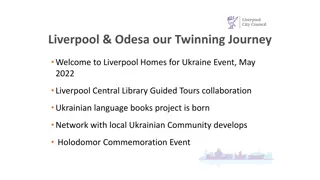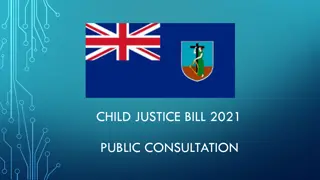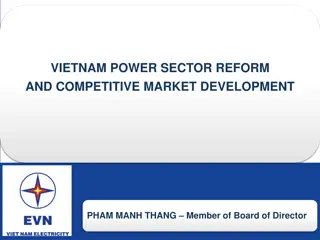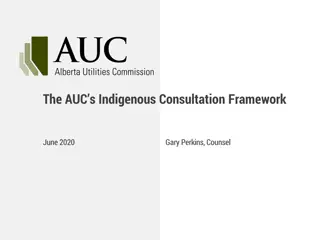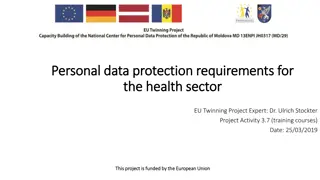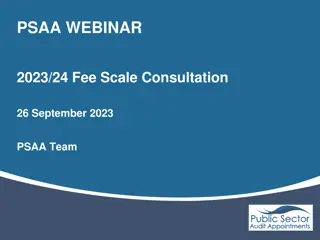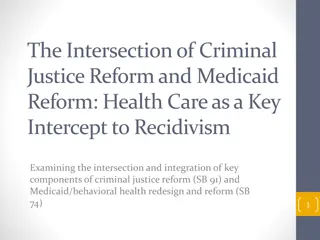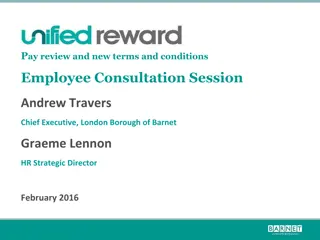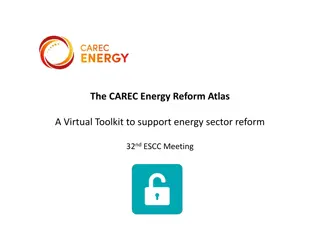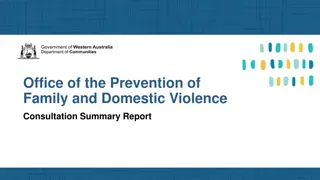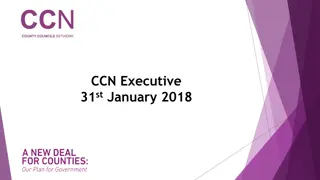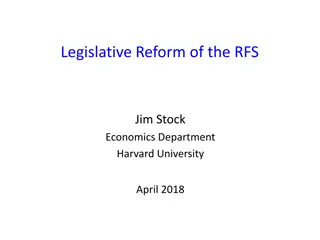Overview of Twinning Reform 2017 with Key Elements and Consultation Process
The Twinning Reform in 2017 focused on simplification, flexibility, and alignment with policy developments. Key elements included harmonization across programs, the establishment of a methodology for financial aspects, and speeding up contracting processes. The consultation process involved discussions with various stakeholders and the issuance of a new manual in June 2017.
Download Presentation

Please find below an Image/Link to download the presentation.
The content on the website is provided AS IS for your information and personal use only. It may not be sold, licensed, or shared on other websites without obtaining consent from the author. Download presentation by click this link. If you encounter any issues during the download, it is possible that the publisher has removed the file from their server.
E N D
Presentation Transcript
Twinning Reform 2017 September, 2017 Twinning Team Video Conference 1
Twinning is Institution Building Nothing is possible without individuals. Nothing is lasting without institutions. Jean Monnet (but "men" changed to "individuals") 2
Twinning in nearly 20 years Last revision of the Manual in 2012, smaller changes since then; Reform triggered by EU MS calls to cut red tape; New Financial Regulation calling for COM DEC and alignment with NEAR policy objectives expressed in Fundamentals First Strategy and Commission strategy to enhance visibility; Time to revisit basic compensation level and methods from 2004 to see if compensation levels reflect reality & ensures interest. 3
The Consultation Process PAPER on Reform of Twinning in 2014 and subsequent discussions with PC and MS NCPs, EUDs; Meeting with EU MS NCPs in Vienna September 2016; Draft Manual following adoption of Commission Decision 1122 of 21 February 2017 to NCPs and EUDs 1 March 2017; DEV DAYS consultation with EUDs (having been requested to also reflect comments from PC) on 24 March 2017; Meetings with EU MS NCPs Brussels 27-28 March, Malta 8-9 May 2017; New Manual issued 30 June 2017. Process was presented during 2014-15-16 IB days with a NON- 4
Key elements of the Twinning reform 1. Simplification, flexibility at implementation, speed of contracting and activity start; 2. Harmonisation across ENI and IPA standardising procedures and processes; 3. Alignment with NEAR policy developments; 4. Commission Decision establishing methodology regulating financial aspects and defining status of Twinning Manual. 5
1. Simplification, flexibility/speed - EU MS proposal to focus on methodology, added value of its administrative model. Could highlight key building blocks, but focus is on Mandatory Results. If any information on financial aspects, such amounts remain indicative and at budget heading level (Twinning Manual Section 2.2, Annex C2); - Contract to be signed earlier than before implementation (arrival of RTA), to start max 3 months after notification of selection (2.4.2.3); - Narrative "heavy" reporting could be decided to only be delivered every 6 months (5.5.2.2.); - Use of Unit costs/flat rates defined in Commission decision to be reflected in contracts leading to less requirements for documentary evidence - only evidence for such cost elements: that the event triggering the compensation took place; - Setting one flat daily allowance set at 350 for civil servants and all MB expert categories; - Allocate reserves in budget to fund sustainability actions (6.2.11) ;6
2. Harmonise Twinning ENI and IPA - Role of Contracting Authority - CA always to be the one to circulate the fiches to MSs (standard and twinning light); - Publication always by EUD, if indirect management, publication via the EUD; - HQs entities consulted on fiche not contract. Twinning Inter-service Group Opinion on the fiche (2.1.2); - Selection aligned (2.4) always consensus - acceptance by EUD; - CA always the entity preparing the contract (3.1.2.); - Always respect conditions set in indirect management agreements between EU and Partner Country (PC) 7
Overview all changes Fiche to focus on reform context and using benchmarks and indicators as for other projects (2.1.1); Name and positions of BC PL and RTA counterparts mentioned in the fiche no contact details; (2.1.1.); Twinning Inter-service Group only giving advice/opinion on finalised version of the fiche (Manual paragraph 2.1.2); Contracting Authority always circulating fiches to EU MS NCPs (2.1.3); EU MS proposal focus on methodology, administrative model, added value and highlighting the key building blocks; Include Declaration of availability of the RTA for the period of implementation (2.2 and Annex A9); For MS PL, a statement to be signed by the person being authorised to commit the MS administration, confirming the availability of the manager including his/her function and entity to assume the role of PL (2.2); EU MS component leaders designation (from "if relevant" to "obliged"); Curricula to be inserted in the proposal: PL, RTA and component leaders (2.2) not any more STEs CVs); 8
Overview all changes Selection process with "consensus defined as non-objection" , partner country "fundamental say" EUD able to halt procedure (2.4.1); Contract always prepared by CA maximum 3 months after notification of selection (3.1.2.); Component leaders counterparts names included in the contract (3.1.2); Start of Activities: As soon as Initial work plan is ready and agreed by the SCM targeting 5-6 months after circulation of fiche (3.3); More focus on defining obligations of partner country and (2.1.1, 4 and Annex C1), partner country "preparatory work", infrastructure, active participation in the project, etc. ; 1 beneficiary administration staff available to support the RTA until the RTA assistant can be selected (5.2.1); Reserve funds for sustainability actions (6.2.11). 9
Overview all changes Initial Work-plan (6 months rolling plan for activities) (5.2.2) - prepared in 4-6 weeks following signature of the contract and arrival of the RTA including Communication and Visibility plan. Work plan to define how much time will be devoted to each activity of the project including STE CVs for the period covered; - updates prepared by RTA and RTA counterpart; - agreed and signed by two PLs; - discussed by SCMs; - accepted by all contracting parties (max 14 days after SCM) - to accelerate the preparation EU MS PL's and/or Component Leaders and/or one support staff can travel to partner country; 10
Overview all changes - A conceptual remark: Twinnings with more than one RTA has always been possible but only if appropriate (absorption capacity of BC Administration and EU MS capacity) - Training RTA counterpart and BC PL: Can participate in HQ training (3.3) Potential un-clarity under 4.1.6.6. " RTA counterpart OR BC PL " - Reports from detailed report every 3 months to possibility to only submit the narrative report part every 6 months* and report to possibly include elements of wider reform context. (5.5.2.2) * discussed and so will the financial report every 3 months. In such case the rolling work plan update will still be 11
Overview all changes - RTA: possibility to be temporarily replaced by EU MS PL (4.1.6.8) - Number of RTA assignments (4 twinning projects) (4.1.6.7) - Replacement of RTA assistants (from redo to use ranking) (4.1.6.10); - Responsibility for declarations related to Mandated Bodies (Annex C.17) = subsidiarity principle regarding structures used in EU MS - Twinning Light from 6 to 8 months (8.1). 12
3. Align with NEAR developments SBS: NIPAC/PAO and EUD to carefully plan Twinning as part of the design of Sector Budget Support programmes. How does Twinning contribute. What is needed in terms of TA and other interventions? Result orientation: Twinning is not always the right tool. Existence on Conditions for Twinning ownership and capacity - should be carefully analysed by NIPAC and EUD. How to support Institution Building without losing the results when project is over? PAR: Integrating Public Administration Reform (PAR) principles in all Twinning - since it is about supporting the approximation of the regulatory framework and the norms and standards to those of the EU and ultimately enhance public governance systems (governance reforms) 13
3. Align with NEAR developments - PAR Twinning aligned with PAR principles a key to sustainability We have so far assumed that Twinning always contributes to PAR efforts in the country Basically all support to acquis alignment improves capacity for implementation and enforcement Improving administrative capacity in one institution has a positive spill-over effect to other parts of administration - but that requires the application of same basic principles across all Twinning projects - -> Recommendation: All Twinning fiches to be screened by PAR coordinator (if any) in the EUD and PAR responsible entity in the partner country. 14
Align with NEAR developments - PAR Relationship PAR and sectorial policies As seen in the past: As advocated now: Education Agriculture PAR Health Employment Education PAR Health Transport and connectivity Agriculture Transport and connectivity Environment Environment Employment
Align with NEAR developments - Twinning aligned with PAR principles a key to sustainability advice from COTE PAR reflect PAR approach in Twinning fiche Twinning Projects should always in addition to the planned measures adopt an approach intended to maximise the capacity building effect and ensure sustainability of results. Ownership is key particularly for Twinning partner country should ensure involvement of sufficient resources from PC (and not only HR) This means such approach must include that: Any development of new strategic document and legislation/amendments will be carried out respecting all national procedures, especially those related to (fiscal/regulatory) impact assessments, public consultations, inter-ministerial coordination; And fast-track adoption procedures should not be supported but rather avoided. Prior to legislative drafting support, assistance should facilitate early stage stakeholder involvement and provide analytical prerequisites (concept support, option analysis). 16
Align with NEAR developments - PAR Twinning aligned with PAR principles a key to sustainability advice from COTE PAR reflect PAR-approach in Twinning fiche mainly done by the beneficiaries and the work should be paired with capacity building of the beneficiary (introduction of international examples, detailed explanation of proposed texts etc.); Any manual/guidelines will be mainly developed by the beneficiary institutions and will be simple enough to be regularly reviewed and updated by the beneficiaries without further external support and not contradict legal provisions of the country. The Beneficiary Institution must present how to ensure long term impact and sustainability of the Twinning project not only in words but in its budget planning (Medium-Term Business Planning MTBP or alike) necessary resources in the partner country administration made available for sustainability purposes? Actual development of policy and legislatives outputs will be 17
Align with NEAR developments NEAR recommending sector level programming advice on impact the description in Twinning fiche and role of RTA and counterparts Twinning developments, previous/current/planned actions not only by EU funding Use sector based standardised indicators and references (as already developed by NEAR Unit A3 - as part of Performance Assessment) Programmers to describe in Twinning fiche how sector coordination networks/working groups/donor complementarity and monitoring is set up EUD and partner country to ensure that PC and EU MS RTA, RTA counterpart (and ST-experts when feasible) are integrated into these networks/working groups/donor coordination platforms Representatives from other donors active in the sector to be invited for SCMs and either the RTA is expected to set up regular meetings with these other actors with or without the participation of the EUD or the PC (EUD to define) fiche to always describe/reflect specific sector reform coordination platforms ensuring 18
Align with other NEAR developments Strengthening EUD role on Communication and Visibility - - Communication / Visibility EU money to timely promote EU policies and strategies rather than the partners implementing the projects Stronger coordination with overall communication and visibility activities needed not only to ensure EU-flag appearance and other "visibility" tools, but in particular timing of visibility actions - EU Delegation always to approve Communication and Visibility programme to be prepared at the same time as the initial work plan (might also require involvement of EUD Press and information Officer), also under indirect management. - Communication/visibility programme to be defined also by political prioritisation of using the particular project as platform for key political messaging. - 19
4. The Commission Decision defining the methodology for unit cost items and flat rates in the contract Decision 1122 of 21.02.2017 Secures compliance of Twinning with FR Art 124 and defines the very existence of the Twinning manual Methodology of Commission Decision now Annex B of Twinning Manual As consequence: Unit costs defined at contracting stage (less supporting document requirements at expenditure verification stage) and definition of what the flat rates compensates One rate for all EU MS for experts (one fixed flat daily allowance at 350 ) and compensation for RTA simplified) Basic idea behind the decision EU under Twinning compensates EU MS (we do not "buy" TA) since Twinning is peer- to-peer and -> Manual further limits use of non-public administration experts and if used there is still no compensation to EU MS for Twinning project support costs (TPSC) if used. 20
THANK YOU INSTITUTION BUILDING ACTIONS LEADING TO SUSTAINABLE CHANGES TAKES TIME AND REQUIRE A CHANGE OF MINDSET OF GOVERNMENTS AND INDIVIDUALS. A BIG THANK YOU FOR YOUR ENGAGEMENT IN MAKING TWINNING A SUCCESS. 21



